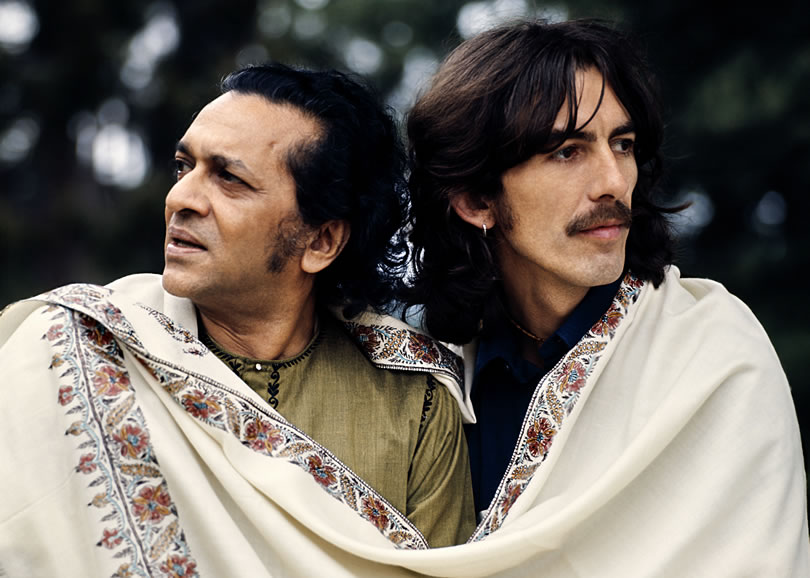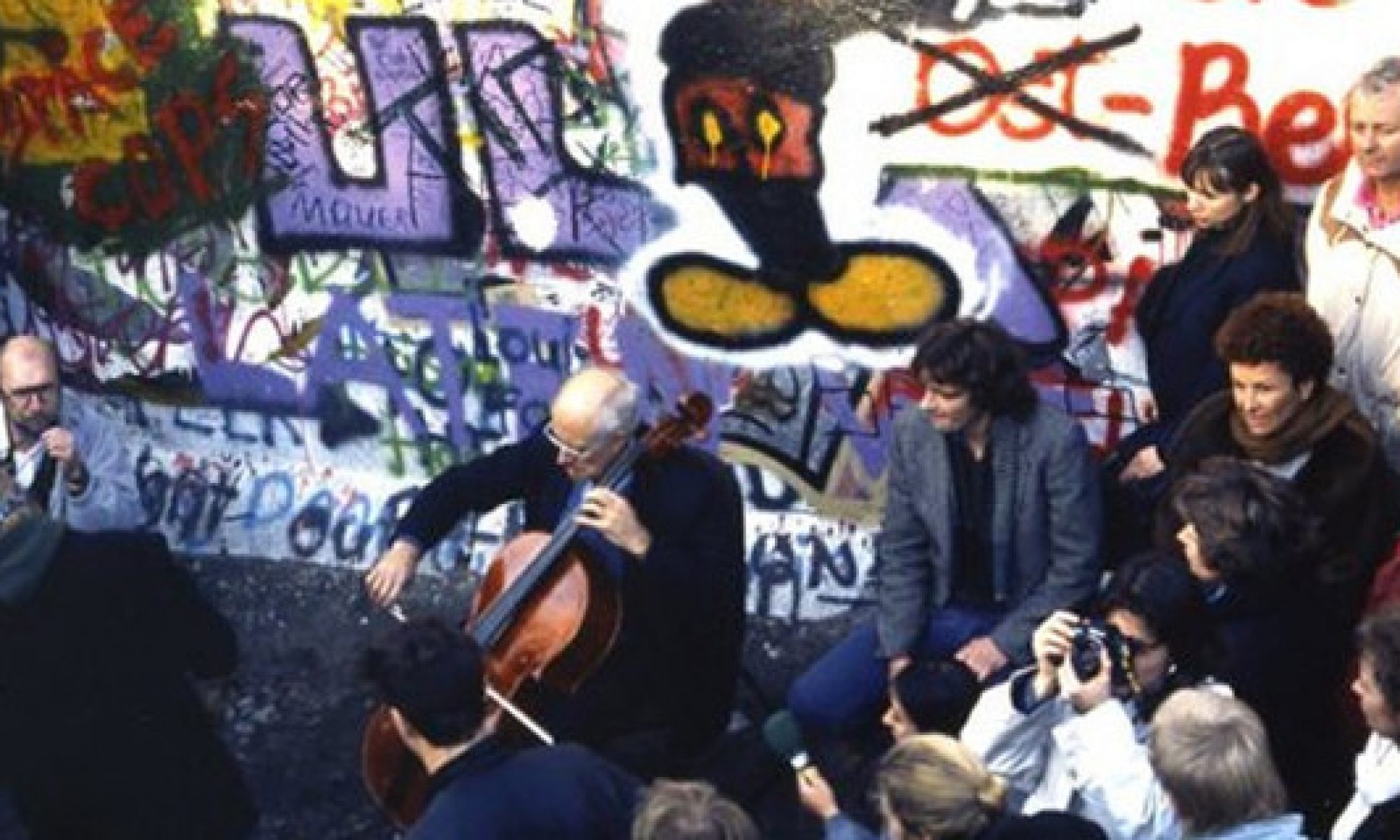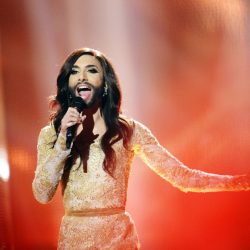When Rockstars use their influence for more than just a musical impact:

I was in a very sad mood, having read all this news, and I said, “George, this is the situation, I know it doesn’t concern you, I know you can’t possibly identify.” But while I talked to George he was very deeply moved and he said, “Yes, I think I’ll be able to do something.”
– Ravi Shankar (Rolling Stone 1971)
Background:
In 1971, Bangladesh was fighting a War of Independence in what was then East Pakistan sparked by the Bengali genocide as well as a rise of the Bengali Nationalist movement. The genocide in Bangladesh began on March 26, 1971 when West Pakistan began a military crackdown on the Eastern part of the nation in order to stop the rise of the Bengali fight for independent rights. (1) During the Bangladesh War of Independence which lasted nine months, members of the Pakistani military teamed up with Islamic militias, and it is estimated they killed between 300,000 and 3,000,000 Bangladeshi people and raped between 200,000 and 400,000 Bangladeshi women. (1) The attacks against women were supported by Jamaat-e-Islami religious leaders, who publicly declared that Bengali women were public property. Also, eight to ten million people, who were mostly Hindus, fled the country to seek refuge in the neighboring country of India. It is estimated that up to thirty million civilians were displaced in the timespan of one year. (1)
On top of the political and military unrest, in November of 1970, East Pakistan endured a devastating cyclone, then in March the country was hit with torrential rains and intense flooding, turning into a humanitarian disaster. It is estimated that almost half a million Bengalis had been killed as a result of the cyclone in November 1970. (2) Due to the mass immigration to India, a new threat appeared as the refugees faced starvation as well as the outbreak of diseases such as cholera. (1)
In the early months of 1971, The Sunday Times in London published an article that became very influential by a Pakistani journalist, Anthony Mascarenhas, which fully exposed the horrific events in Bangladesh. Ravi Shankar, a Bangledeshi musician, approached his old friend, George Harrison about getting help to attempt to alleviate the suffering affecting his homeland and relatives. (2) At the end of April that year, Harrison spent the next three months organizing the Concert for Bangladesh over the phone. Shankar originally hoped to raise $25,000 through a benefit concert of his own. Although once Harrison committed to the cause, he was given a much bigger platform for film and record outlets through the Beatles’ Apple Corps organization, this allowed his original idea to grow into a star packed musical event mixing Western rock with Indian classical music, to be held at Madison Square Garden, in New York City. (2)

For his encore, Harrison played his new single, “Bangla Desh” (meaning Bengal Nation):
My friend came to me with sadness in his eyes
Told me that he wanted help
Before his country dies;
Although I couldn’t feel the pain
I knew I had to try.
Now I’m asking all of you
To help us save some lives
Bangla Desh, Bangla Desh
Event and Impact:
Harrison spent the months leading up to August 1971 preparing and organizing this concert. He reached out to many famous friends and connections to convince them to participate. Out of the Beatles, only Ringo Starr agreed to participate. Paul Mccartney still had hard feelings from the legal issues that pursued from the breakup of the band, and John Lennon had originally agreed but after a fight due to the fact Yoko Ono had not been asked to participate, he ended up leaving New York City just days before the concert. (4) George Harrison was otherwise successful in convincing artists to join and the concert had performances from Bob Dylan, Eric Clapton, Leon Russell, Klaus Voorman, Badfinger and many other lesser known artists. The concert also featured Ravi Shankar and some other Indian artists who played traditional Indian music. (4) Although George was able to round up a star studded group, it was very important to him for the lineup to remain a secret. He felt that this secret would give maximum impact in the moment at the theatre, so promotional posters beforehand simply read “George Harrison and Friends” (3) There was also the matter that Harrison himself was not sure who would actually show up to the event. Eric Clapton was extremely sick at the time, going through extreme heroin withdrawal. Also, Bob Dylan showed signs of concern, he hadn’t performed live since a motorcycle accident he had a few years earlier and also claiming that a place like this isn’t his scene. (3) Luckily, both artists performed leading this event to be extremely successful.
Bob Dylan’s appearance alongside two former Beatles was a sensational hit among the audience. Rolling Stone even declared the concerts “The Greatest Rock Spectacle of the Decade”. (2) Billboard called the performances of all the artists as “their best music ever” claiming that”there is no politics involved. What is involved is starving children and for once, relief through 35 musicians who should represent the feeling of anyone who loves their music.” (4) Allen Klein, who was the manager of Harrison, made claims about how peaceful the event was. He claimed there was no rioting and not even a police officer in sight. Press reports about the two Concert for Bangladesh shows were overwhelmingly positive. The Bangladesh benefit was so successful due to the powerful impact of the music as well as the selflessness of the motives behind it. The two shows at Madison Square raised $243,418.50 which was given to directly to UNICEF on August 12, 1971. By December, Capitol Records produced a check of $3,750,000 from the sales of the Concert for Bangladesh live album. (4) Considering that Ravi Shankar originally had a goal of raising $25,000, the success and impact of this event is extremely apparent. This event is also an example of the influence and impact that celebrities can have outside of music. Madison Square Garden sold out twice without even knowing who was going to be preforming other than George Harrison. There were accounts of people paying up to $600 on tickets and spending their retirement fund. (2) Although this event obviously could not solve all problems in Bangladesh, it still was successful in raising a lot of money as well as raising awareness to somewhere and something that is plausible to assume that many Americans were unaware off previously. With this being said, in our society, the influence of celebrities is so immense that when they use it on a cause or event, it is likely to be successful.
1.) Dummett, Mark. “Bangladesh War: The Article That Changed History.” BBC News. BBC, December 16, 2011. https://www.bbc.com/news/world-asia-16207201.
2.) Editors, RS. “The George Harrison Bangla Desh Benefit.” Rolling Stone, June 25, 2018. https://www.rollingstone.com/music/music-news/the-george-harrison-bangla-desh-benefit-41257
3.) “George Harrison.” Biography.com. A&E Networks Television, June 26, 2019. https://www.biography.com/musician/george-harrison.
4.) “Ross Altman: The Concert for Bangladesh.” FolkWorks. Accessed October 16, 2019. https://folkworks.org/columns/how-can-i-keep-from-talking-ross-altman/41800-the-concert-for-bangladesh.

